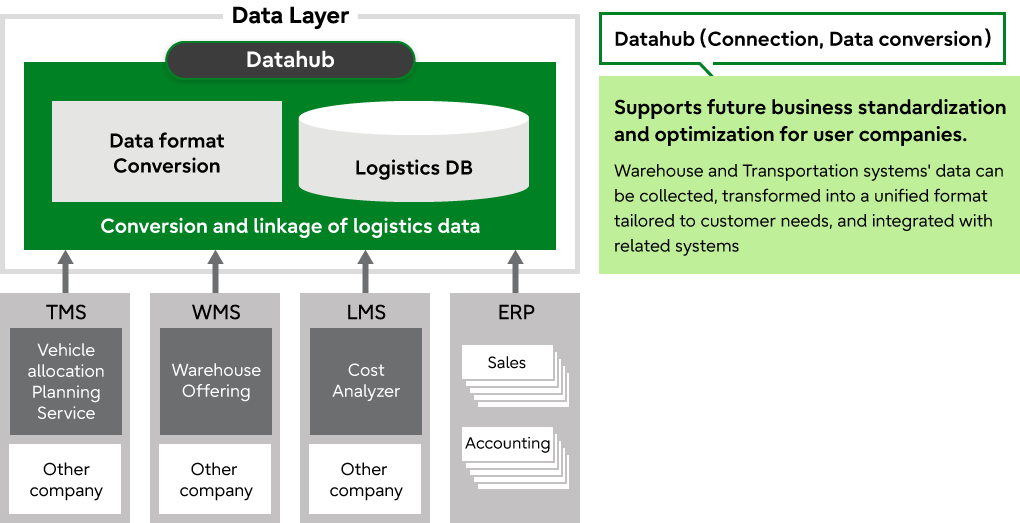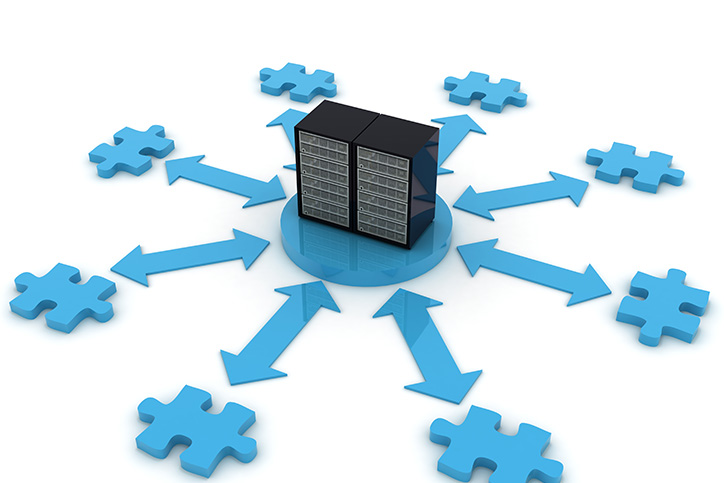Logistics Global Link
Services that help customers solve their logistics issues by utilizing data from logistics sites and enabling data linkage with external systems.

By 2030, it is said that there will be a 34% shortage of transportation capacity. Shippers are concerned that their supply chains, which are essential to their business, will collapse. They believe that they need to take the initiative to improve their logistics operations (not just leave it to logistics providers). Moreover, it is becoming increasingly difficult to solve problems with the efforts of one company alone, and companies need to collaborate on joint delivery and relay transportation.
Service Overview
This cloud service supports various utilization by standardizing logistics data through the Datahub function, which converts and accumulates data collected from related systems.

Features

Hub for Existing Systems
Background: Manual data unification is labor-intensive.
Challenge: Modifying numerous systems is costly and time-consuming.
Benefit: Accommodates variations in data items and granularity.

Multi-Vendor Support
Background: Cross-system management across multiple vendors is lacking.
Challenge: Data cannot be unified due to differences in specifications and units.
Benefit: Unifies data from different vendors.

Simplified Data Exchange with Business Partners
Background: EDI systems are required for data exchange with business partners.
Challenge: EDI requires a certain investment budget.
Benefit: Enables data exchange with business partners via REST-API.
*Note: Not suitable for large datasets.
Use Cases
Utilization at individual user companies
Collecting and managing logistics data from multiple vendors and 3PLs is a complex, time-consuming, and labor-intensive task for many customers. Implementing Global Link enables the collection of logistics data from multiple vendors and 3PLs, transforms the collected data into a unified format tailored to customer needs, and integrates it with existing systems (e.g., core business systems). This reduces the burden of complex tasks, enabling efficient logistics data management and achieving cost containment (e.g., by reducing overtime). Furthermore, by sharing and utilizing standardized data within the supply chain, it becomes possible to improve demand forecast accuracy by standardizing source data, implement measures against food loss by optimizing overall supply chain inventory, and strengthen resilience through swift decision-making in logistics operations during emergencies like disasters, including selecting alternative logistics methods.
